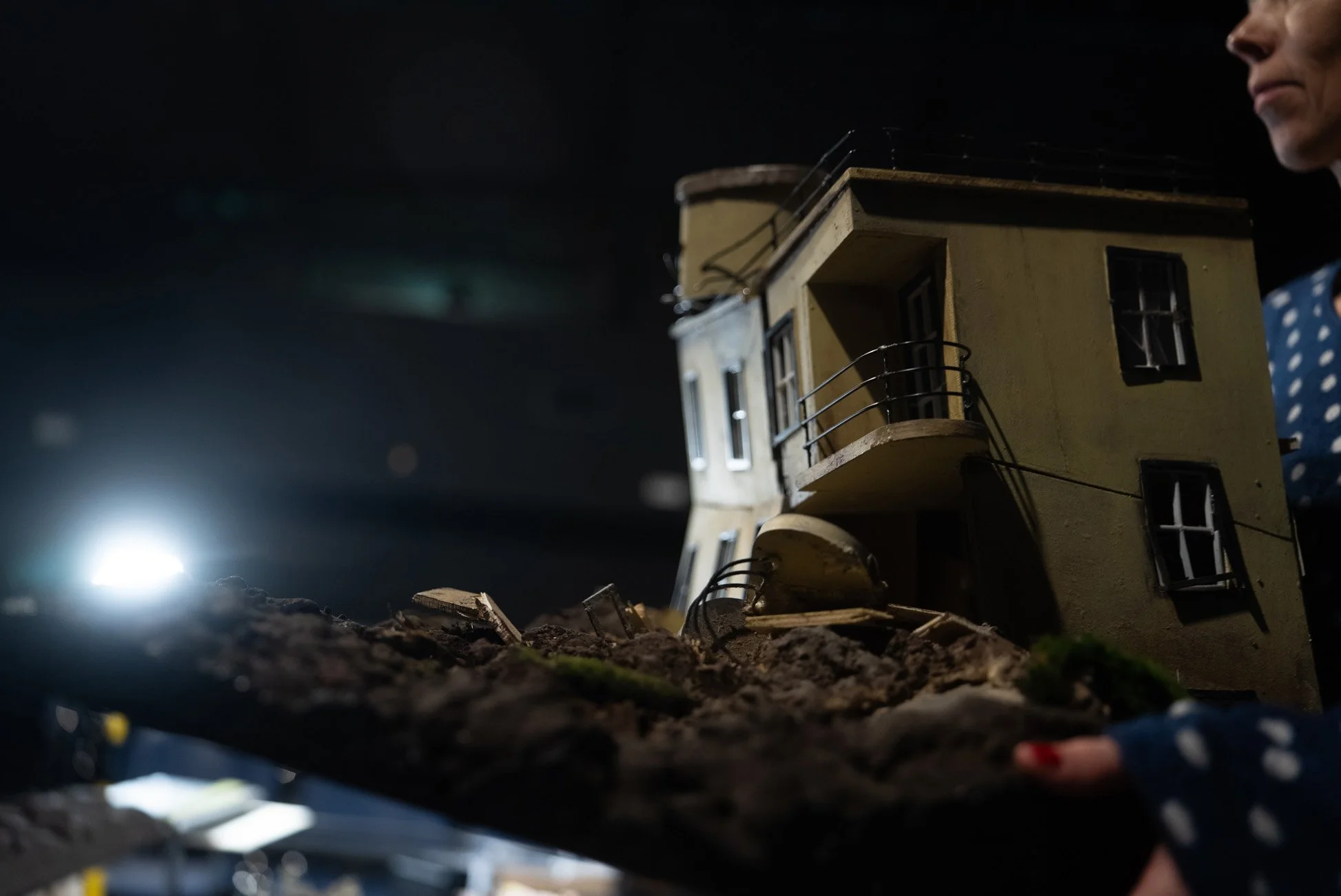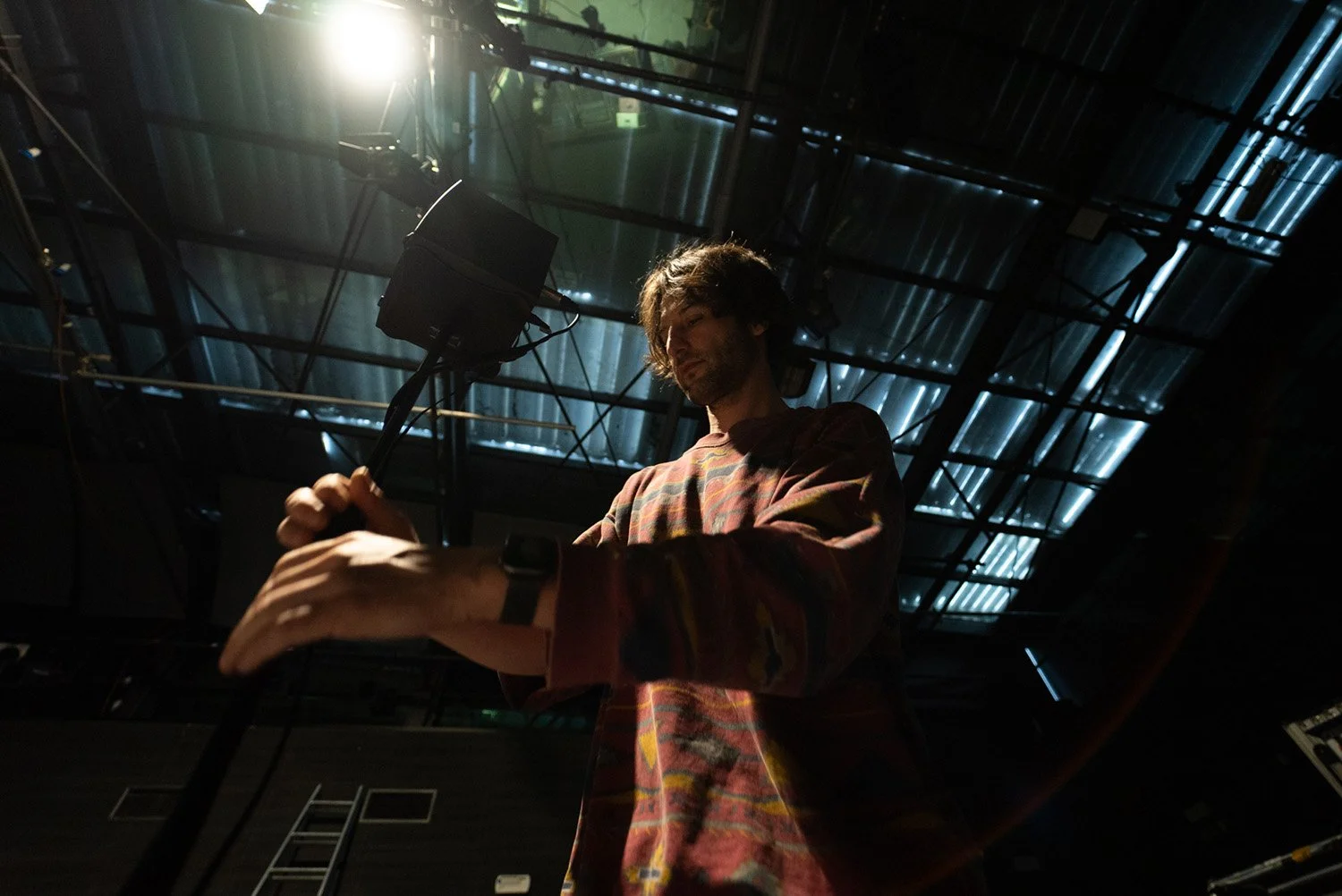BEHIND THE SCENES
The making of Transport united six European theatres, each crafting a unique piece to explore sustainability in a modular, flexible performance. Explore the journey behind this innovative production.
INNOVATIVE PUPPET
MAKING
The performance's technology is deeply intertwined with various technological innovations, enabling the creation of a unique visual image that transcends traditional approaches to contemporary puppet theatre. One of the key innovations is the use of 3D printing, which allows for the creation of complex and hyperrealistic visual worlds (at a 1:25 scale).
The process of creating 3D figures for the Transport performances is precise and multi-stage, from the digital model to the hand-painted miniature.
Creating the Digital 3D Model
Each figure begins as a digital 3D model. This can be created in two ways:
Using Existing Models: Sometimes, pre-made models from online libraries are used.
Custom Model Creation: For accurate depictions of people, a special process with a professional camera is used. The person is photographed with tens of thousands of photos, based on which the computer creates a precise 3D model that captures all the details.
Preparation for Animation (Rigging)
To enable the digital model to move, Aleksander prepares it using a process called "rigging." He "installs" a digital skeleton—virtual bones and joints—into the model. With the help of reference points that define the movement of individual body parts, Aleksander creates various poses in the virtual space, previously planned by the director. These poses hint at movement and express the character's message. This process in puppet theatre is similar to inserting a frame into a puppet or using strings with marionettes to create movement.
3D Printing (Creating Physical Figures)
Once the digital models are prepared and placed in the desired poses, they are printed with a resin 3D printer. This printer works on the principle of layering: light-sensitive liquid resin is illuminated layer by layer until it hardens into a solid figure. This technology allows for extreme precision and the creation of tiny details, such as fabric texture, buttons, or even individual fibers. The final product is thus very accurate and detailed.
Post-Processing
The printed figures are further processed for strength, durability, and final appearance. The processing takes place in three steps: UV curing in a rotating irradiator, application of a protective coating against the effects of light, and hand-painting.
The last, and perhaps most important, step is the precise hand-painting of each individual figure. This achieves the desired final look, adding details such as clothing colors, facial features, and other embellishments. Hand-painting allows for extreme precision and an individual approach to each figure, which contributes to their uniqueness.
About PUPPETs & SET DESIGN
Aleksander Andželović –
On the Process of Creating 3D Figures
Katarina Planinc and Laura Krajnc –
On Painting and Patination Techniques
ADVANCED WIRELESS LIGHTING
TECHNOLOGY
In Transport, we use miniature worlds – dioramas of architecturally designed spaces, buildings, roads, and other public areas, which are illuminated. To achieve the desired atmosphere and scene mobility, we introduced an innovative wireless lighting system developed by lighting designer Gregor Kuhar and Matej Lazar, the creator of the wireless system.
Each scenic element has its own battery, miniature computer, and wireless transmitter controlled by software. This innovation enables a connection between wireless micro-lighting control and conventional theatrical lighting. The lighting technician can thus control both spotlights and the intensity and dynamics of the lights within the dioramas from the lighting console.
Each diorama therefore has its own computer and battery, while a central computer manages wireless communication between them and the lighting console, which controls the entire lighting setup.
About LIGHTING
Gregor Kuhar –
On Wireless Lighting
The performance employs a unique animation technique that departs from traditional puppetry and draws inspiration from stop-motion animation and comic book language. Through careful choreography of static images (figures), rhythm, light, and sound, a kinetic illusion of movement is created.
ANIMATION BASED ON THE PRINCIPLE
OF KINETIC ILLUSION
When observing these elements, the viewer's brain fills in the gaps and creates a sense of fluid animation. Instead of using a camera, as is typical in stop motion, the audience actively co-creates the movement of the figures in their imagination, which, combined with other elements, creates a convincing illusion of movement. Their psychological and emotional projection adds an extra dimension to the experience, breathing life into the static figures.
SOUND WORLDS OF
TRANSPORT
In Transport, sound and music actively shape the experience and create rich sonic worlds.
In the Transport performances, sound and music are not merely background; they actively shape the performance experience. They create rich sonic worlds that transport the viewer into the depths of the story and emotions.
Music: From Atmosphere to Psychology
The music in Transport does not solely create atmosphere; it primarily plays a key role in the psychological characterization of the figures. It supports and deepens their emotional states, offering viewers insight into their inner worlds. Through its subtlety and expressiveness, the music emphasizes internal conflicts, relationships between characters, and pivotal moments in the story.
Sound: Building Blocks of Space and Movement
Sound plays a multifaceted role in Transport, extending far beyond mere sound effects.
Soundscapes: Ambient sounds establish diverse spatial contexts, from intimate to vast and even otherworldly. In doing so, they not only complement the set design but sometimes even replace it, creating a convincing illusion of space for the viewer.
Animation and Narrative: Sound acts as a link between the mostly static images of the figures, bringing them to life in the viewer's imagination. It creates the illusion of movement, connecting individual images and their actions into a fluid and dynamic narrative.
The three-dimensional sound design (3D Audio), using complex software and a multi-channel speaker system, creates a convincing spatial illusion and a sense of depth. The synchronous movement of sound with the movement of the figures further deepens the experience of space and movement, allowing the viewer to fully immerse themselves in the performance's sonic world.
Through the innovative use of music and sound, Transport creates a rich and multi-layered audiovisual experience that deeply connects the viewer with the story and its characters.
On Sound and Music
Mateja Starič – On Sound and Music in the Performance























